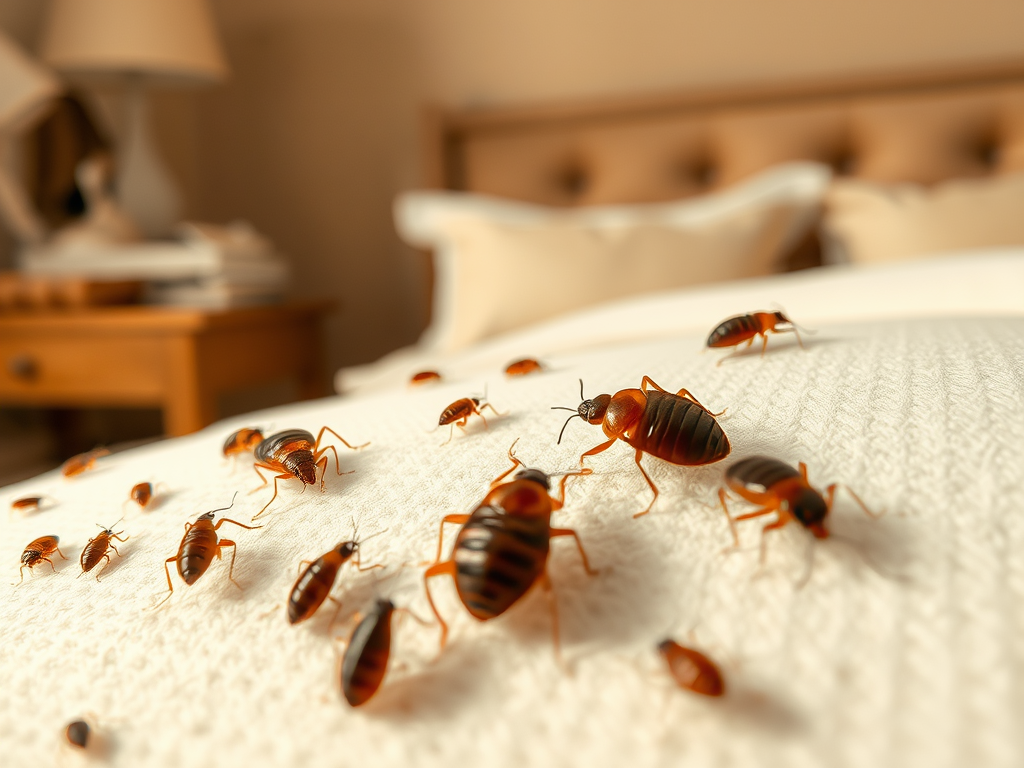Common Insects That Look Like Bed Bugs: A Cleaning Checklist
Encountering insects that resemble bed bugs can invoke panic and concern among homeowners. These pests can disrupt your peace of mind, affecting not just your sleep but your overall health. Differentiating between bed bugs and look-alikes requires attention to detail and knowledge of insect behavior. With this guide, we aim to empower you with the knowledge needed to identify these pests accurately. You’ll not only understand what you’re dealing with but also learn effective strategies for keeping your home clean and pest-free. By following the provided cleaning checklist, you will be better prepared to manage potential infestations.
Identifying Bed Bugs

Bed bugs are small, wingless insects that feed on the blood of humans and animals. They typically measure about 1 to 5 mm in length and have a distinctive oval shape. Their color ranges from light brown to reddish-brown, especially after feeding. Understanding their behavior can be just as important as recognizing their physical traits. Bed bugs are most active at night, making it essential to identify them quickly. A successful identification process facilitates a quicker response to any potential infestations.
Common Insects That Resemble Bed Bugs

There are several insects that visually resemble bed bugs, making proper identification critical. Here are some of the most common bed bug look-alikes:
- Bat Bugs: Often found in areas occupied by bats, bat bugs have longer hairs and slightly different body shapes than bed bugs.
- Spider Beetles: Their brown coloration can mimic that of bed bugs, but spider beetles have distinct round bodies.
- Carpet Beetles: These beetles may be mistaken for bed bugs due to their size and color, yet they usually have more rounded bodies.
- Fleas: Dark and agile, fleas can be confused with bed bugs when seen in bedding, but they are capable of jumping long distances.
- Cimex Adjacent Species: Various species in the Cimex genus look like bed bugs; careful observation is needed for proper identification.
Insects can be deceptive, especially in environments where infestations might occur. In addition to physical characteristics, understanding their behaviors and habitats can help streamline identification. For instance, bat bugs are typically found near roosts, while fleas thrive in areas with pets. If you suspect an infestation, observant behavior patterns can provide useful clues to distinguish between these pests.
| Insect | Size | Color | Habitat | Key Characteristics |
|---|---|---|---|---|
| Bed Bug | 1-5 mm | Brown to reddish-brown | Bedding, furniture | Flat, oval shape, nocturnal |
| Bat Bug | 1-5 mm | Brown | Near bat roosts | Longer hairs than bed bugs |
| Spider Beetle | 2-7 mm | Brown | Dark corners of rooms | Round body shape |
Signs of Infestation
Identifying the signs of infestation is essential before taking any cleaning steps. These indicators can range from physical sightings to behavioral cues:
- Visual Cues: Look for shed skins, bite marks, and fecal stains that might suggest a bed bug presence.
- Behavioral Indicators: Unexplained bites on yourself or pets could signal an infestation from bed bugs or similar pests.
- Frequent Itching: If you notice continuous itching, this may be an indication of bug bites from pests in your home.
Addressing infestation issues early can mitigate their impact on your living environment. Keeping an eye out for these signs will help you act quickly and efficiently. It’s wise to maintain vigilance, especially in common areas where pests thrive. Once confirmed, taking preventive measures becomes paramount for effective management.
Cleaning Checklist
Having a thorough cleaning checklist can boost your ability to manage potential infestations. Here’s how to approach cleaning different areas in your home:
Bedrooms
- Wash all bedding and linens in hot water.
- Vacuum mattresses and surrounding areas thoroughly.
- Inspect and clean all cracks in the headboard and nightstands.
Living Areas
- Move sofas and chairs to vacuum beneath them.
- Clean all rugs and carpets; don’t forget under furniture.
- Wipe down all surfaces, focusing on hidden spots.
Laundry
- Use high-temperature washing and drying for all fabrics.
- Store clean laundry away from infested areas.
- Regularly clean laundry baskets to prevent buildup.
Conclusion
Recognizing the differences between bed bugs and their look-alikes is vital for effective pest management. Whether through careful observation or utilizing the cleaning checklist provided, taking proactive steps can make a significant difference. Following these guidelines will not only help in identifying pests but also enhance your living conditions. Remember that proper sanitation and cleanliness are keys to preventing infestations. With diligence, you can ensure that your home remains a safe, pest-free haven.
Frequently Asked Questions
- What are the main differences between bed bugs and bat bugs? Bat bugs have longer hairs and differ slightly in body shape compared to bed bugs.
- Can carpet beetles infest my bed like bed bugs? Yes, carpet beetles can infest bedding, but their behaviors and life cycles differ from those of bed bugs.
- How can I properly clean my home to get rid of fleas? Wash all fabrics in hot water and vacuum frequently to eliminate flea eggs and larvae from your home.
- What should I do if I find an insect that I think is a bed bug? Capture the insect if possible and consult a pest control expert for accurate identification and treatment options.
